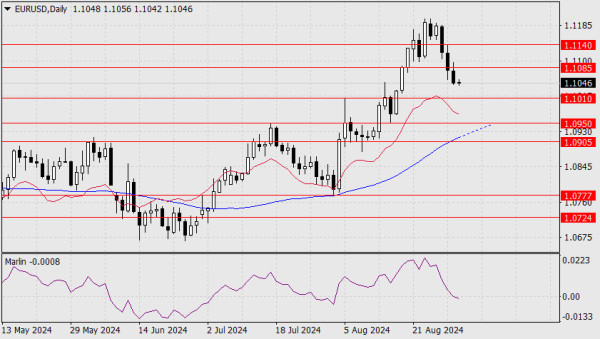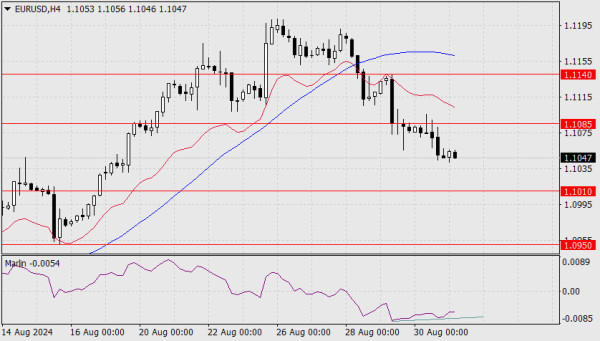Forecast for EUR/USD on September 2, 2024
Following the release of U.S. data on personal consumption expenditures (PCE) and personal income/spending from Friday, the dollar index increased by 0.35%. The euro declined by 30 points, settling below the 1.1085 level. The decline paused at the peak level from August 14. Additionally, the signal line of the Marlin oscillator has reached the boundary of the declining trend territory and suggests a potential correction.
However, the main reason for the strengthening of the bulls is that stock market indices are aiming to set new historical records. If the stock market continues to rise, the euro is unlikely to reach the target support of 1.0950. As the MACD line approaches this level, it becomes key in shifting the trend to a medium-term downtrend.

Today is a holiday in the U.S. and Canada, and with the ECB expected to lower rates in 10 days, the euro may not challenge the 1.0950 level too soon. Today and tomorrow, the euro will likely test the resistance at 1.1085. A subsequent attempt to reach 1.1010 is possible, as the price is currently trading within the range of 1.1010 to 1.1085. Declining commodity prices in the local situation will help the dollar.

On the H4 chart, the price and oscillator have formed a small but significant convergence indicating a potential correction. We expect the price to reach the indicated level of 1.1085.